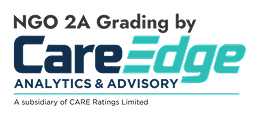OPEN HOUSE 2026 Click here

OPEN HOUSE 2026 Click here

ADMISSION ENQUIRY - 2026
Advanced Web Development using .Net
GANPAT UNIVERSITY |
|||||||||||||||||||||||||||||||||||||||||||||||||||||||||||||||||||||||||||
|
FACULTY OF ENGINEERING & TECHNOLOGY |
|||||||||||||||||||||||||||||||||||||||||||||||||||||||||||||||||||||||||||
|
Programme |
Bachelor of Technology |
Branch/Spec. |
Computer Science & Engineering |
||||||||||||||||||||||||||||||||||||||||||||||||||||||||||||||||||||||||
|
Semester |
VI |
Version |
1.0.0.0 |
||||||||||||||||||||||||||||||||||||||||||||||||||||||||||||||||||||||||
|
Effective from Academic Year |
2024-25 |
Effective for the batch Admitted in |
June 2022 |
||||||||||||||||||||||||||||||||||||||||||||||||||||||||||||||||||||||||
|
2CSE60E29 |
Subject Name |
Advanced Web Development using .Net |
|||||||||||||||||||||||||||||||||||||||||||||||||||||||||||||||||||||||||
|
Examination scheme (Marks) |
|||||||||||||||||||||||||||||||||||||||||||||||||||||||||||||||||||||||||||
|
(Per week) |
Lecture(DT) |
Practical(Lab.) |
Total |
CE |
SEE |
Total |
|||||||||||||||||||||||||||||||||||||||||||||||||||||||||||||||||||||
|
L |
TU |
P |
TW |
||||||||||||||||||||||||||||||||||||||||||||||||||||||||||||||||||||||||
|
Credit |
3 |
0 |
1 |
0 |
4 |
Theory |
40 |
60 |
100 |
||||||||||||||||||||||||||||||||||||||||||||||||||||||||||||||||||
|
Hours |
3 |
0 |
2 |
0 |
5 |
Practical |
30 |
20 |
50 |
||||||||||||||||||||||||||||||||||||||||||||||||||||||||||||||||||
|
Pre-requisites: |
|||||||||||||||||||||||||||||||||||||||||||||||||||||||||||||||||||||||||||
|
Database, ASP.Net, C#, ADO.Net |
|||||||||||||||||||||||||||||||||||||||||||||||||||||||||||||||||||||||||||
|
Learning Outcome: |
|||||||||||||||||||||||||||||||||||||||||||||||||||||||||||||||||||||||||||
|
After Successful completion of the course, students will be able to:
|
|||||||||||||||||||||||||||||||||||||||||||||||||||||||||||||||||||||||||||
|
Practicals are defined based on the following topics |
|||||||||||||||||||||||||||||||||||||||||||||||||||||||||||||||||||||||||||
|
Sr. No. |
Content |
Hrs |
|||||||||||||||||||||||||||||||||||||||||||||||||||||||||||||||||||||||||
|
1 |
Introduction of .NET Core: Understanding .NET Core, .NET Core Features, .NET Core Framework Architecture, .NET Core 3.0 vs .NET 4.5 Framework, .NET Core Supports, Advantages of .NET Core, .NET App Model, .NET CLI |
6 |
|||||||||||||||||||||||||||||||||||||||||||||||||||||||||||||||||||||||||
|
2 |
ASP.NET Core MVC ASP.NET Core MVC Introduction, ASP.NET Core - MVC Design Pattern, Routing, Attribute Routes, Action Results, Razor Layout Views, Create a web app with ASP.NET Core MVC, Add a controller, Add a view, Add a model, Work with SQL Server LocalDB, Controller methods and views, Add search, Add a new field, Add validation, Examine the Details and Delete methods |
10 |
|||||||||||||||||||||||||||||||||||||||||||||||||||||||||||||||||||||||||
|
3 |
ASP.NET Core MVC with Entity Framework Core Get started, Create, Read, Update, and Delete operations, Sorting, filtering, paging, andgrouping, Migrations, Create a complex data model, Reading related data, Updating related data |
8 |
|||||||||||||||||||||||||||||||||||||||||||||||||||||||||||||||||||||||||
|
4 |
Areas in ASP.NET Core Areas for controllers with views, Area folder structure, Add Area route, Link generation with MVC areas, Filters in ASP.NET Core How filters work, Filter types - Authorization filters, Action filters, Result filters, Exception filters, Resource filter, Filter Attributes |
8 |
|||||||||||||||||||||||||||||||||||||||||||||||||||||||||||||||||||||||||
|
5 |
Entity Framework Core: Object Relational Mapping (ORM), Entity Framework, Database Modeling, CRUD Operations, Database Migration, Repository Design Pattern, Unit of Work Design Pattern, Dependency Injection |
6 |
|||||||||||||||||||||||||||||||||||||||||||||||||||||||||||||||||||||||||
|
6 |
Web API with ASP.NET Core MVC Introduction to Web API, Create a web API project, Add a model class and a database context, Scaffold a controller with CRUD methods,Configure routing, URL paths, and return values,Call the web API with Postman, Consume Web API with JavaScript |
4 |
|||||||||||||||||||||||||||||||||||||||||||||||||||||||||||||||||||||||||
|
7 |
Introduction to Azure Cloud: Cloud, WebAPI using Azure Cloud, Azure services, Microsoft Azure Storage, Azure Virtual Network, Azure Virtual Machines |
3 |
|||||||||||||||||||||||||||||||||||||||||||||||||||||||||||||||||||||||||
|
Suggested Practical List |
|||||||||||||||||||||||||||||||||||||||||||||||||||||||||||||||||||||||||||
|
Practical contents will be based on following concepts: ASP.Net Core, Entity Framework, Web API, Azure Cloud |
|||||||||||||||||||||||||||||||||||||||||||||||||||||||||||||||||||||||||||
|
Text Books |
|||||||||||||||||||||||||||||||||||||||||||||||||||||||||||||||||||||||||||
|
1 |
C# 8.0 and .NET Core 3.0 – Modern Cross-Platform Development: Build applications with C#, .NET Core, Entity Framework Core, ASP.NET Core, and ML.NET using Visual Studio Code, by Mark J. Price |
||||||||||||||||||||||||||||||||||||||||||||||||||||||||||||||||||||||||||
|
2 |
ASP.NET Core 2.0 MVC and Razor Pages for Beginners |
||||||||||||||||||||||||||||||||||||||||||||||||||||||||||||||||||||||||||
|
3 |
Pro ASP.NET MVC 5 (Expert's Voice in ASP.Net), by Adam Freeman |
||||||||||||||||||||||||||||||||||||||||||||||||||||||||||||||||||||||||||
|
Reference Books |
|||||||||||||||||||||||||||||||||||||||||||||||||||||||||||||||||||||||||||
|
1 |
Learn ASP.NET Core 3: Develop modern web applications with ASP.NET Core 3, Visual Studio 2019, and Azure, by Kenneth Yamikani Fukizi, Jason De Oliveira, Michel Bruchet |
||||||||||||||||||||||||||||||||||||||||||||||||||||||||||||||||||||||||||
|
2 |
Pro Entity Framework Core 2 for ASP.NET Core MVC by Adam Freeman |
||||||||||||||||||||||||||||||||||||||||||||||||||||||||||||||||||||||||||
|
3 |
Pro ASP.NET Web API: HTTP Web Services in ASP.NET (Expert's Voice in .NET) by Tugberk Ugurlu, Alexander Zeitler, Ali Kheyrollahi |
||||||||||||||||||||||||||||||||||||||||||||||||||||||||||||||||||||||||||
|
Mooc Course |
|||||||||||||||||||||||||||||||||||||||||||||||||||||||||||||||||||||||||||
https://www.dotnettricks.com/training/masters-program/aspnet-core |
|||||||||||||||||||||||||||||||||||||||||||||||||||||||||||||||||||||||||||
|
Course Outcomes: |
|||||||||||||||||||||||||||||||||||||||||||||||||||||||||||||||||||||||||||
|
Cos |
Description |
||||||||||||||||||||||||||||||||||||||||||||||||||||||||||||||||||||||||||
|
CO1 |
Understand ASP.Net Core and Entity Framework |
||||||||||||||||||||||||||||||||||||||||||||||||||||||||||||||||||||||||||
|
CO2 |
Building web applications using the MVC model of ASP.NET Core |
||||||||||||||||||||||||||||||||||||||||||||||||||||||||||||||||||||||||||
|
CO3 |
Deploy web application in Microsoft Azure Cloud Environment. |
||||||||||||||||||||||||||||||||||||||||||||||||||||||||||||||||||||||||||
|
CO4 |
Develop Web API using ASP .Net Core |
||||||||||||||||||||||||||||||||||||||||||||||||||||||||||||||||||||||||||
|
Mapping of CO and PO:
|
|||||||||||||||||||||||||||||||||||||||||||||||||||||||||||||||||||||||||||






